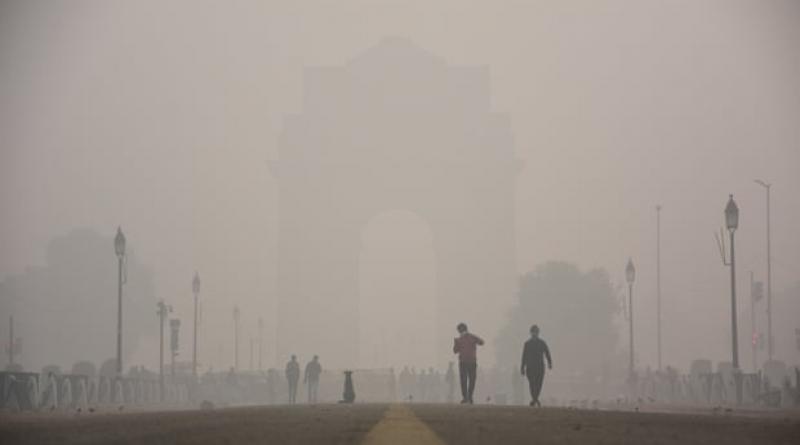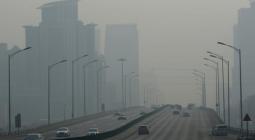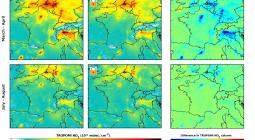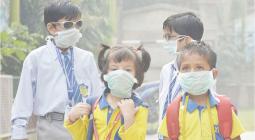Delhi Covid crisis worsened by soaring pollution levels.

Indian capital records highest single day rise in cases as monitor says pollution is at 14 times WHO safe level.
Delhi’s 20 million residents are facing a double health crisis as high levels of pollution look set to exacerbate the coronavirus pandemic.
The twin threats have been looming over the city for the past week. After managing to get fresh daily infections under control last month, the city is witnessing its worst wave so far, recording a highest single day rise on Tuesday of 7,830 new cases.
Equally off the charts is the catastrophic pollution that has wrapped the city in a poisonous shroud for the past week and which, doctors say, will weaken people’s lungs and render them even more vulnerable to the virus.
The pollution is a replay of last year’s crisis. The sensors at the air quality monitoring stations can measure up to the value of 500. For the past six days, the index has reached 490. But a federal monitoring agency classified the air quality on Tuesday at 724. An air quality index (AQI) score of between zero and 50 is considered safe by the World Health Organization (WHO).
The thick smog has blurred the city’s skyline. Residents complain of smarting eyes, coughing and difficulty breathing. Doctors have advised everyone to stay indoors if they can, particularly children and the elderly.
In homes, the red “alert” lights have been blazing on even the most powerful air purifiers. It can take some time before the hazardous pollution is brought down to a tolerable level, only to shoot up again if anyone opens a door or window.
The reasons for the pollution are the same as last year and previous years: car emissions, burning of waste, construction dust, and the burning of farm stubble in neighbouring states. The weather, with not enough winds to disperse the pollutants, has made thing worse.
Civil servant Ashish Narang has not ventured out for a week. “We were already confined indoors because of the pandemic but we could at least go for a walk with a mask but now we can’t do that either. How can our lungs stand a chance against the virus if they are already blackened and damaged by pollution?” he asked.
Despite the crisis, the New Delhi government has given no indication that it is disturbed or alarmed, beyond announcing a ban on letting off firecrackers, a tradition during Diwali, which is on Saturday.
Nor has any minister in Narendra Modi’s government made any comment on the poor air quality.
Hospitals say there has been a rise in the number of people complaining of respiratory illnesses. “Increased pollution has led to a nearly 25% increase in respiratory problems,” said Dr Vivek Nangia, head of the Institute of Respiratory and Critical Care at Max Hospital. Owing to the acute shortage of beds due to Covid, he said the hospital was managing these cases via teleconsultation or the outpatients department.
Studies have shown that lungs weakened by pollution are more vulnerable to coronavirus, suggesting that the city is facing a double disaster. The virus figures have been spiralling upwards and the New Delhi government shows no sign of being able to get them under control yet.
This has come as a shock for residents because the city seemed to have turned the corner last month when daily infections had fallen to around 2,500. Quarantine centres were lying empty and hospital beds were easily available. The worst seemed over.
All that has changed as restrictions have been relaxed. Markets are jam-packed with shoppers, most wearing masks but with no social distancing. Diwali is likely to see more movement and socialising.
Hospitals are complaining of an acute shortage of beds and stories are once again doing the rounds of families having to drive around for hours looking for a hospital bed.
The Indian Medical Association has said that 13% of the city’s recent Covid cases may be linked to air pollution.
11 November 2020
The Guardian





